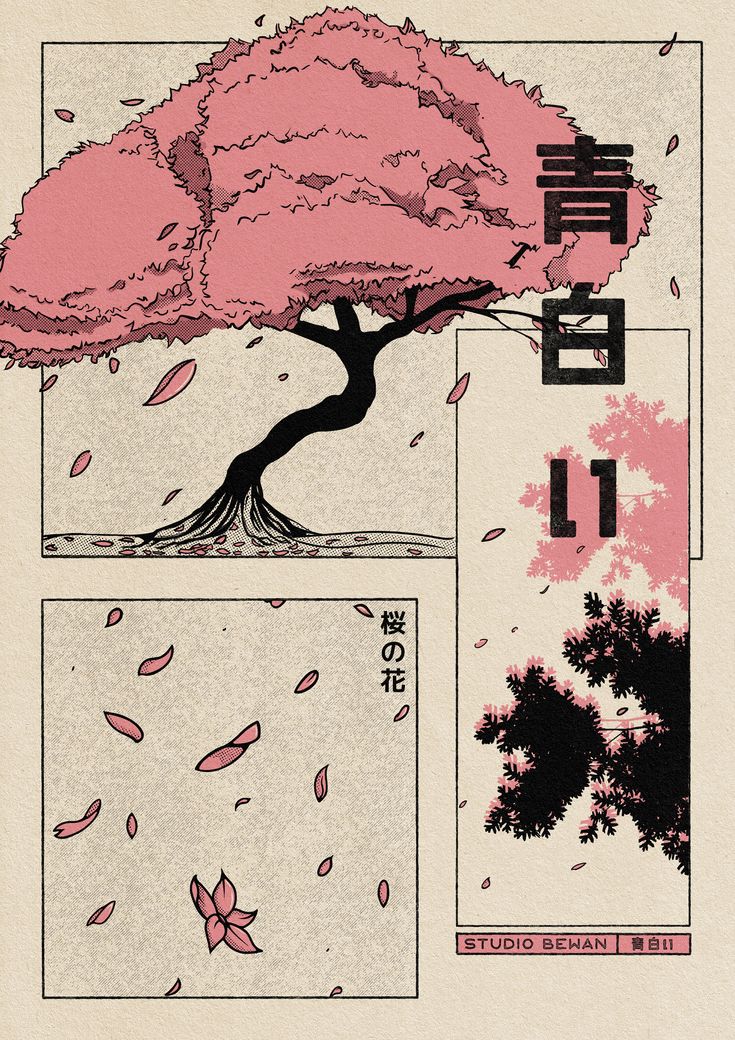So, what exactly hanami is?
«花見» (pronounced as «hanami») is a traditional Japanese custom of enjoying the beauty of cherry blossoms, specifically during the sakura (cherry blossom) season. The term «花見» consists of two kanji characters: «花» (hana) meaning «flower» and «見» (mi) meaning «viewing» or «seeing.»
Hanami typically involves picnicking under cherry blossom trees in parks, gardens, or along riversides. Families, friends, and colleagues gather together to appreciate the delicate beauty of the blossoms, often accompanied by food, drinks (such as sake or tea), and lively conversation.
This centuries-old tradition holds deep cultural significance in Japan, symbolizing the transient nature of life and the beauty of renewal. Hanami is also a time for reflection, celebration, and appreciation of nature’s fleeting wonders. It’s considered one of the most beloved and anticipated events of the year in Japan, drawing locals and visitors alike to witness the stunning spectacle of cherry blossoms in full bloom.
The history of hanami
The history of hanami, or cherry blossom viewing, in Japan dates back over a thousand years and is deeply intertwined with the country’s cultural heritage and traditions. The origins of hanami can be traced to the Nara period (710–794), when the practice of flower viewing became popular among the aristocracy and elite members of society.
During this time, the Japanese imperial court held extravagant hanami parties known as «梅祭» (ume matsuri), or plum blossom festivals, to celebrate the arrival of spring. Plum blossoms, or «梅» (ume), were initially the primary focus of these gatherings, admired for their beauty and fragrance.

However, it was during the Heian period (794–1185) that hanami began to evolve into its modern form, with cherry blossoms gradually replacing plum blossoms as the preferred flower for viewing. This transition was influenced by the rise of «桜餅» (sakuramochi), a type of rice cake filled with sweet red bean paste and wrapped in a cherry leaf, which became associated with hanami festivities .
By the medieval era, hanami had become a widespread custom practiced by people of all social classes. sakura viewing parties were held in temples, shrines, and private gardens, where attendees would compose poetry, play music, and engage in philosophical discussions beneath the blossoming trees.
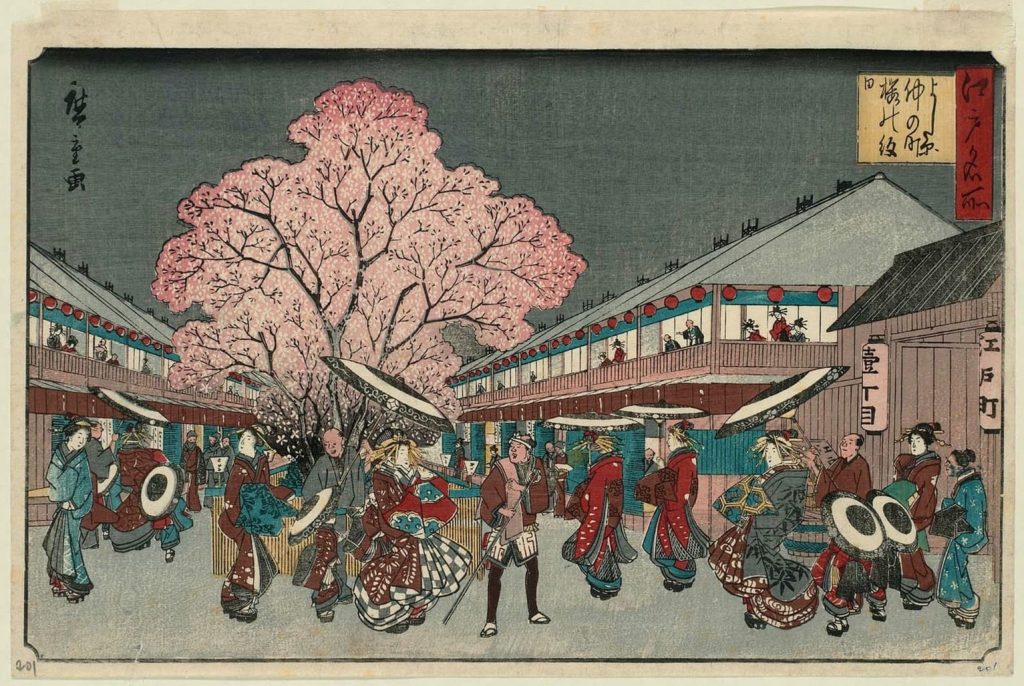
During the Edo period (江戸時代) (1603–1868), hanami reached new heights of popularity as Japan experienced a period of peace and prosperity. The blossoming of cherry trees along the banks of the Sumida River (隅田川) became particularly renowned, attracting large crowds of spectators and revelers.
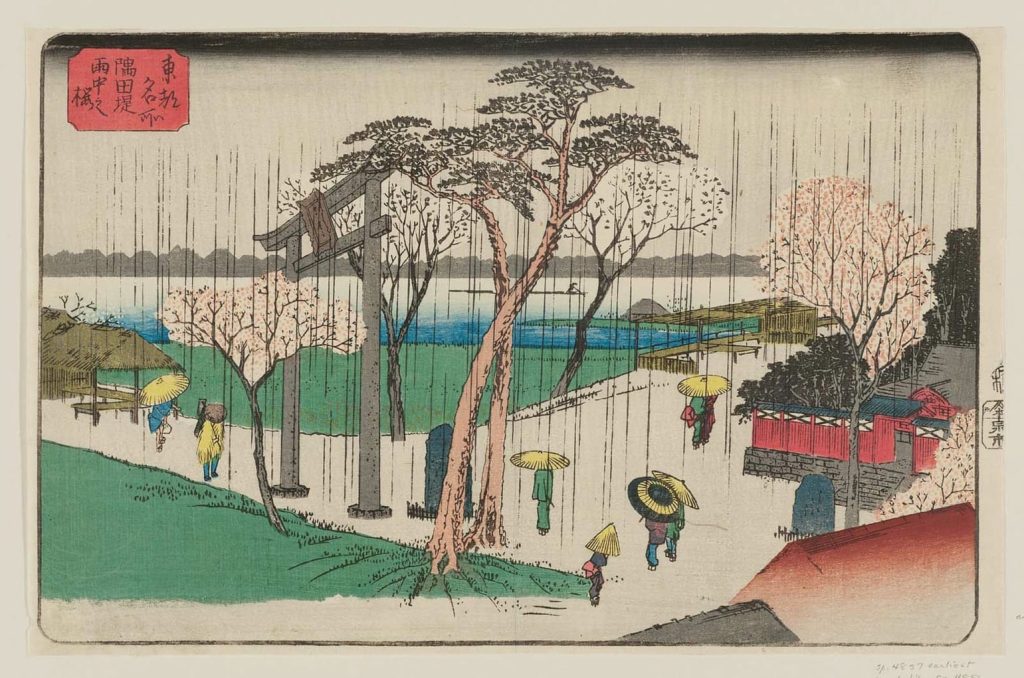
The tradition of hanami continued to flourish into the modern era, with cherry blossom viewing becoming an integral part of Japanese culture and identity. Today, hanami is celebrated across Japan from late March to early May, depending on the region, with millions of people gathering in parks, gardens, and along rivers to picnic beneath the blossoming trees.
While hanami has evolved over the centuries, its essence remains unchanged – it is a time to appreciate the beauty of nature, to connect with friends and family, and to reflect on the transient nature of life. The history of hanami serves as a testament to the enduring significance of cherry blossoms in Japanese society and their ability to inspire joy and wonder generation after generation.
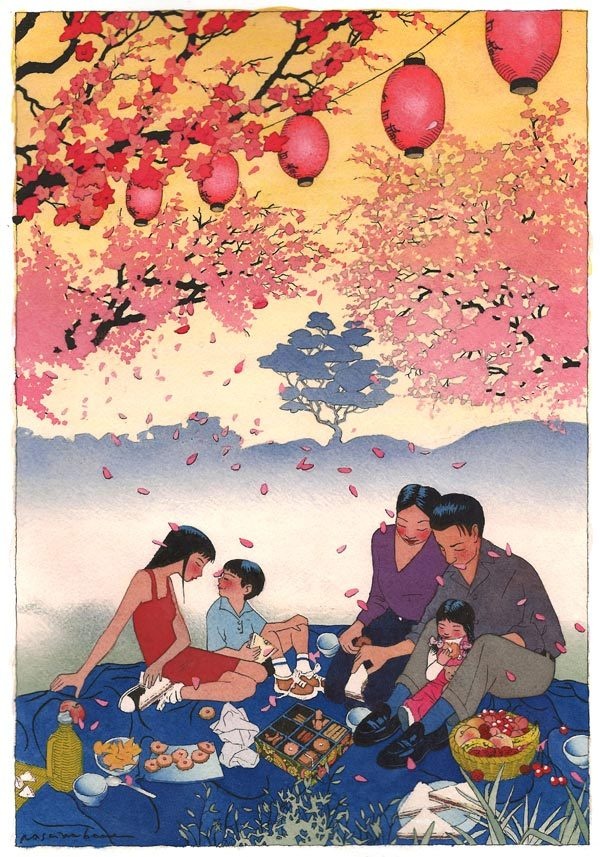
The Symbolism of Cherry Blossoms
In the heart of Japan’s springtime, a delicate ritual unfolds beneath the boughs of cherry blossom trees. Known as hanami, this tradition of flower viewing is far more than a simple appreciation of nature’s beauty – it’s a profound reflection of life’s transient nature and the eternal cycle of renewal.
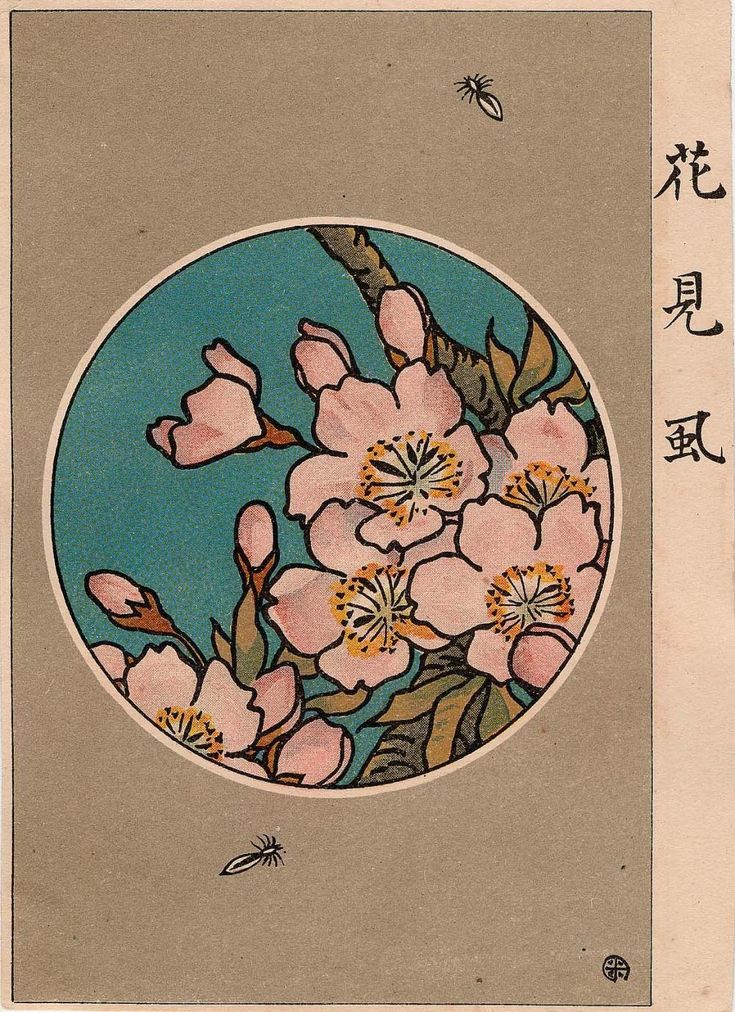
Cherry blossoms, or 桜 (sakura), symbolize the fleeting essence of existence. Their ethereal blooms burst forth in a blaze of pink and white, captivating all who behold them. Yet, their moment of glory is brief, lasting only a week or two before the petals flutter to the ground. This ephemeral display serves as a poignant reminder of the impermanence of all things, urging us to embrace the present moment and find joy in life’s fleeting pleasures.
Hanami is a celebration of life’s beauty and impermanence, encapsulated in the delicate petals of cherry blossoms. As we gaze upon their fleeting splendor, we are reminded to cherish each moment, to find solace in nature’s rhythms, and to take comfort in the knowledge that, like the sakura, life is ever-changing, ever-renewing, and endlessly beautiful.
Philosophical concept of hanami

Hanami, the revered tradition of cherry blossom viewing in Japan, embodies the profound philosophical concept of «物の哀れ» (mono no aware). This term, often translated as «the pathos of things,» encapsulates the bittersweet recognition of the impermanence and transient beauty of life.
At its essence, hanami serves as a poignant meditation on the fleeting nature of existence. The delicate cherry blossoms, with their brief yet spectacular bloom, symbolize the ephemeral nature of life itself. Like the cherry blossoms that burst into bloom only to scatter to the wind in a matter of days, life unfolds in a series of transient moments, each one imbued with its own unique beauty and significance.
Through the act of hanami, we are invited to contemplate the impermanence of life and the inevitability of change. As we stand beneath the blossoming cherry trees, surrounded by the ephemeral beauty of nature, we are reminded of the fleeting nature of our own existence. Yet, far from being a cause for despair, this realization inspires a profound sense of appreciation and reverence for the present moment.
Moreover, hanami encourages us to embrace the principle of «侘び寂び» (wabi-sabi), finding beauty in imperfection and impermanence. The cherry blossoms, with their delicate forms and transient lifespan, exemplify the wabi-sabi aesthetic, reminding us that true beauty often lies in the simple, imperfect, and fleeting aspects of existence.
Dive Into Japanese Mythology: The Myth about Inari Okami (稲荷大神)
In Japanese mythology, the tradition of hanami, or cherry blossom viewing, is often associated with the story of the deity Inari Okami (稲荷大神). Inari Okami is a Shinto deity (神) associated with rice, fertility, and prosperity, and is often depicted as a fox messenger.

Legend has it that Inari Okami’s favorite food is aburaage (油揚げ), a type of fried tofu. In one particular myth, Inari Okami is said to have held a grand hanami party under a grove of cherry blossom trees, inviting all the creatures of the forest, including the foxes. As a gesture of hospitality, Inari Okami served abundant quantities of aburaage to the guests.
During the festivities, the foxes indulged in the delicious aburaage and reveled in the beauty of the cherry blossoms. It is said that Inari Okami was so pleased with the joyous atmosphere of the hanami party that he decreed that the tradition of hanami should be observed annually in his honor.
In this mythological explanation of hanami, the deity Inari Okami serves as a central figure, embodying the divine connection between humanity and the natural world. Hanami, therefore, is not just a seasonal pastime but a sacred ritual, a way of honoring the beauty of nature and expressing gratitude for the abundance of blessings it provides.

